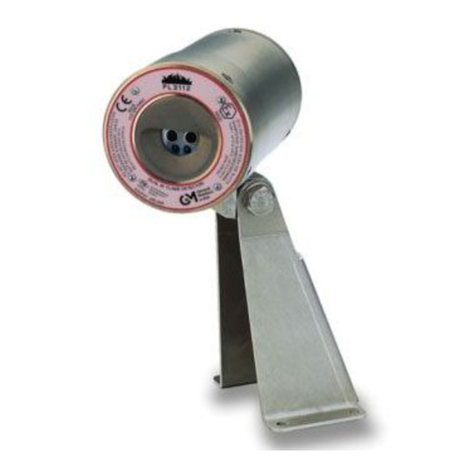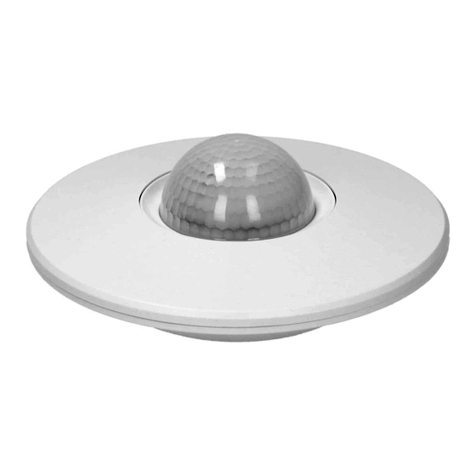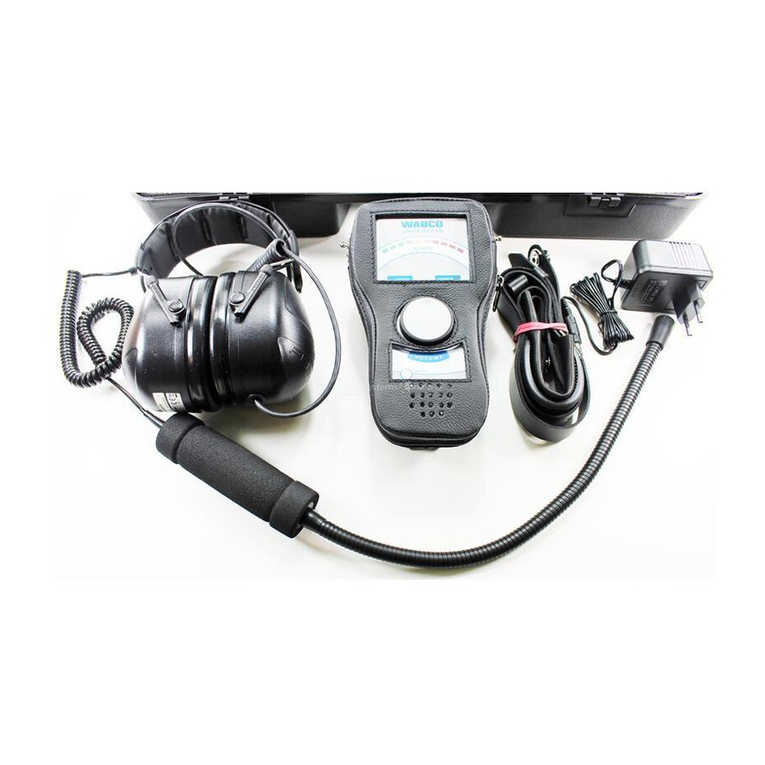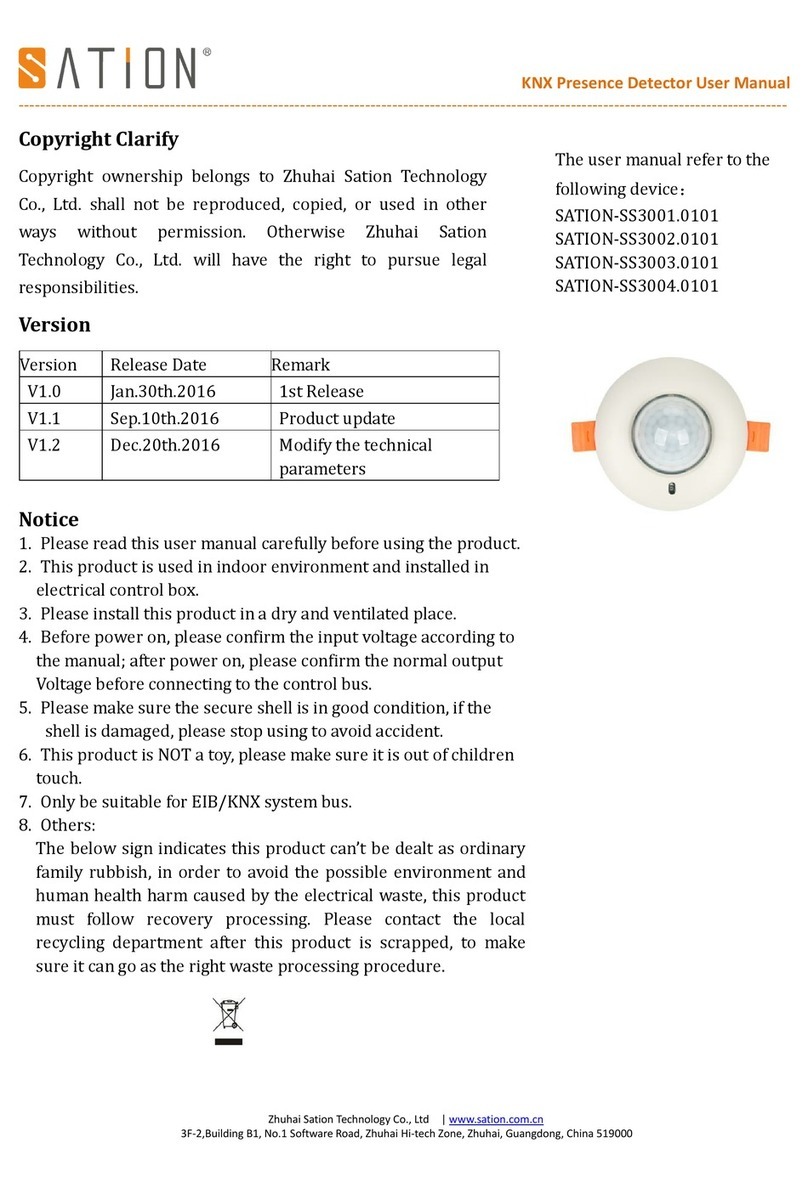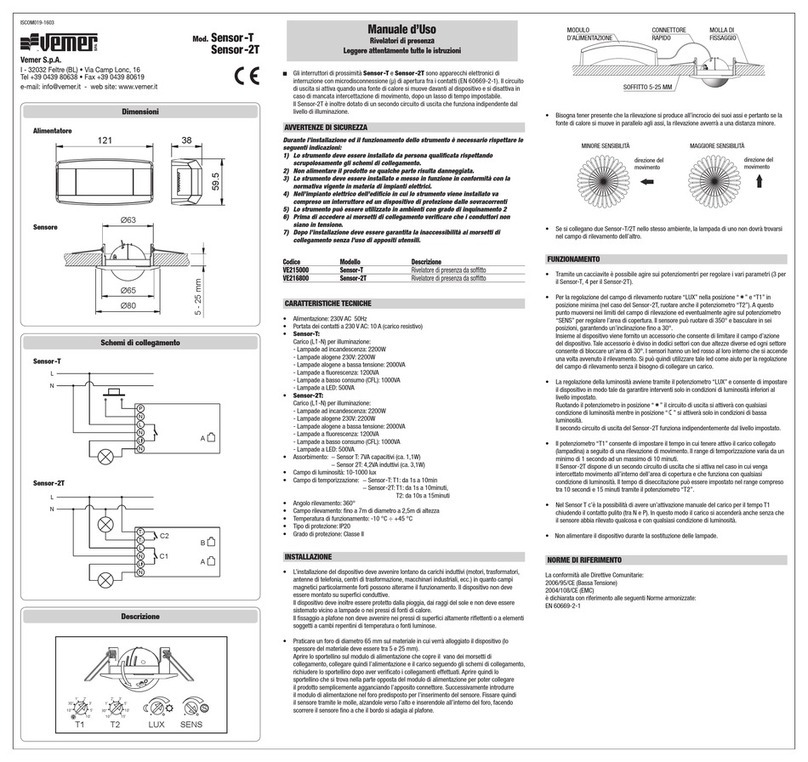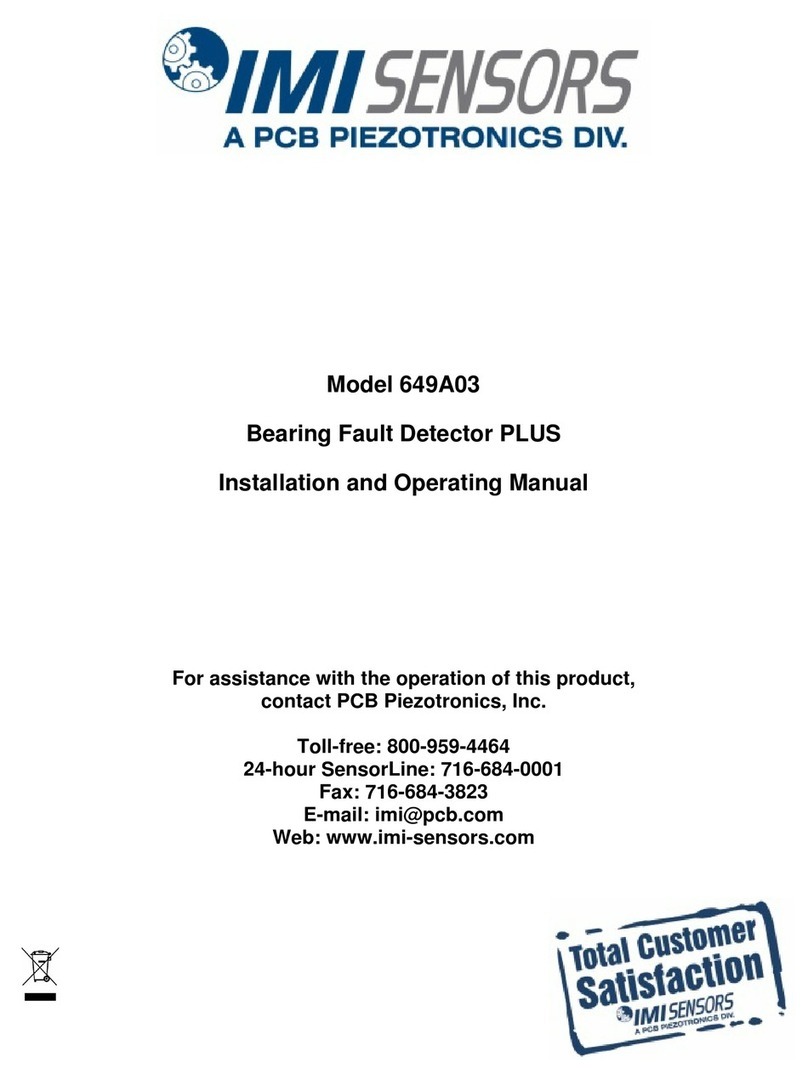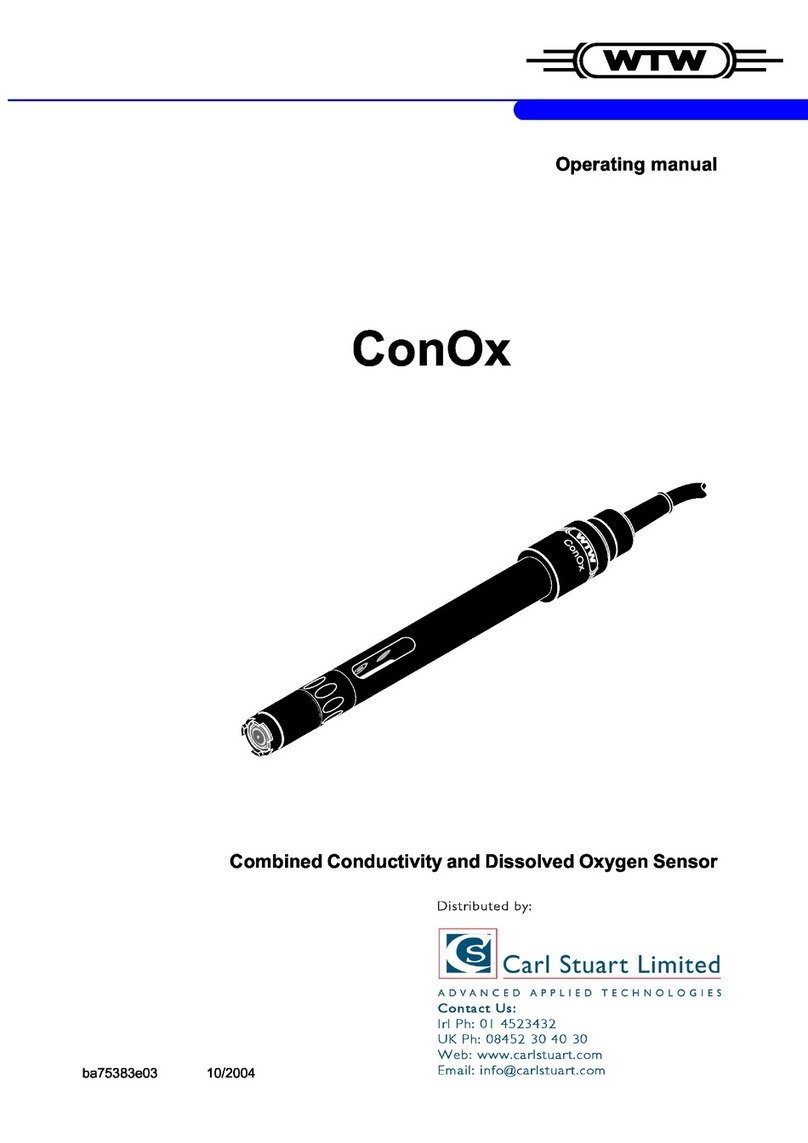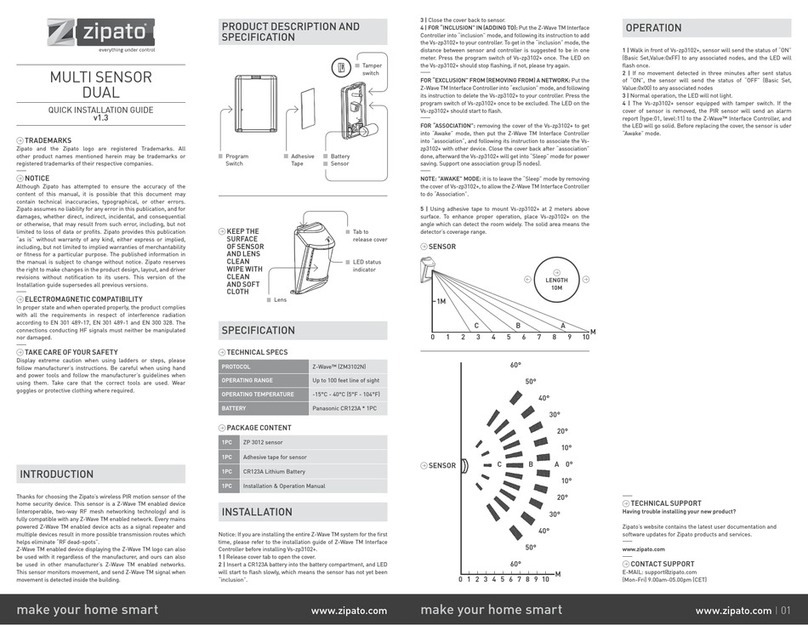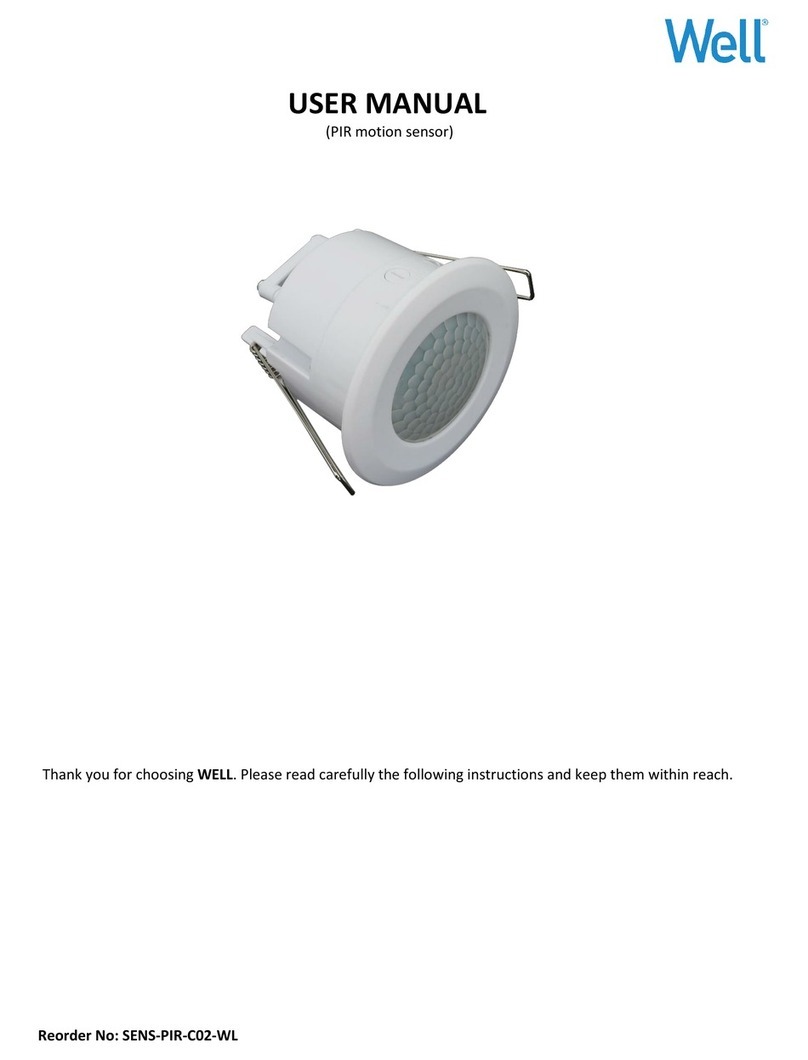Strongarm le100 User manual

273100085 EN
(Original instruction manual)
Edition 06.2015
Instruction manual for rescue equipment
Combination tools e100 and le100
e100
le100

2
Inhalt Seite
1.Danger classi¿cations 4
2.Product safety 5
3.Intended use 8
4.Functional description 10
4.1 Description 10
4.2 Structure and functions 11
4.3 Hydraulic circuit diagram 13
4.4 Operating movement controls 14
5.Operation 14
5.1 Battery for StrongArm™ e100/le100 14
5.2 Operating the star grip 15
6.Cutting, spreading, spread open doors 15
6.1 Safety notes 15
6.2 Cutting 16
6.3 Spreading 17
6.4 Spreading open doors 18
7.Accessories 20
7.1 Battery 20
7.2 Battery charger 21
7.3 Attachment strap 21
7.4 Accessory rail 22
8.Dismantling the equipment / deactivation following operation 23
9.Maintenance and service 23
9.1 Inspections StrongArm™ e100/le100 24
9.2 Protective equipment 24
9.3 Checking and exchanging the ¿lter element 25
10.Repairs 26
10.1 General information 26
10.2 Preventive service 27
10.3 Repairs 27

3
11.Troubleshooting 30
12.Technical data 31
12.1 StrongArm™ e100/le100 32
12.2 Noise emission 33
12.3 Operating and storage temperature ranges 33
12.4 Oscillation / vibration 33
12.5 Torque speci¿cation and wrench size for pivot bolt 33
13.Lighting (optional expansion possibility) 34
14.Instructions regarding disposal 36
15.Notes 37
Inhalt Seite

4
1. Danger classi¿cations
Wear a helmet with a face guard.
Wear protective gloves.
Wear safety shoes
Proper recycling
Protect the environment
Read and follow the operating instructions.
We differentiate between various categories of safety instructions. The table shown below
provides an overview of the assignment of symbols (pictograms) and signal words to the
speci¿c danger and the possible consequences.
Pictogram Damage /
injury to Keyword De¿nition Consequences
Persons
DANGER! Immediate danger Death or severe
injury
WARNING! Potentially
dangerous
situation
Potential death or
serious injury
CAUTION! Less dangerous
situation Minor or slight
injury
Property
ATTENTION! Risk of damage
to property/
environment
Damage to the
equipment,
damage to the
environment,
damage to
surroundings
- NOTE
Handling tips and
other important/
useful information
and advice
No injury/damage
to persons/
environment/
device

5
Please ensure that no body
parts or clothing are caught
between the visibly moving
parts (e.g. blade arms).
Working under suspended
loads is not permitted where
such loads are being lifted
only by means of hydraulic
or electro-hydraulic devices.
If this work is unavoidable,
suitable mechanical supports
are also required.
Wear protective clothing,
a safety helmet with visor,
protective footwear and
gloves.
Inspect the device before and
after use for visible defects or
damage.
2. Product safety
HURST products are developed and manufactured to ensure the best performance and
quality when used as intended.
Thesafetyoftheoperatoristhemostimportantconsiderationinproductdesign.Furthermore,
the operating instructions are intended to help you use HURST products safely.
The generally applicable legal and other binding regulations pertaining to the prevention of
accidents and protection of the environment apply and are to be complied with in addition to
the operating instructions.
The equipment may only be operated by persons with appropriate training in the safety
aspects of such equipment, otherwise, there is a risk of injury.
Wewouldliketo point outtoall usersthatthey shouldcarefullyread the operatinginstructions
and the instructions they contain before they use the equipment and carefully follow them.
We further recommend that you have a quali¿ed trainer show you how to use the product.
CAUTION!
The operating instructions for accessories must also be taken into account!
Even if you have already received instructions on how to use the equipment, you should still
read through the following safety instructions again.
WARNING / CAUTION!
Please ensure that the accessories you use are appropriate for the maximum
operating pressure and the performance of the rescue device!

6
Immediately report any
changes that occur (including
changes in operating
behavior) to the appropriate
persons/departments! If
necessary, the equipment is
to be shut down immediately
and secured!
All bolted connections must
be checked for leaks and
externally visible damage,
which must be repaired
immediately! Escaping
hydraulic Àuid can cause
injuries and ¿res.
In the event of malfunction,
immediately deactivate the
device and secure it. Repair
the fault immediately.
Do not carry out any changes
(additions or conversions)
to the equipment without
obtaining the prior approval of
HURST.
Observe all safety and danger
information on the device and
in the operating instructions.
All safety and danger
instructions on the device
must always be complete and
in a legible condition.
Any mode of operation which
compromises the safety and/
or stability of the device is
forbidden!
Repairs to the equipment
may only be carried out by
a trained service technician
with speci¿c knowledge of the
device.
Safety devices may never be
disabled! Only genuine HURST
accessories and spare parts
are to be used for repairs.
Before switching on/starting
up the device and during its
operation, make sure that
nobody will be endangered
by this.
Observe all intervals
for recurring tests and/
or inspections that are
prescribed or stated in the
operating instructions.
When working close to live
components and cables,
suitable measures must
be taken to avoid current
transfers or high-voltage
transfers to the equipment.
Please note that material
could fall down or suddenly
break free during spreading,
cutting operations as a
result of shearing, tearing or
breaking; appropriate steps
must be taken to avoid this.

7
Please ensure that you do not
become entangled in cables
and trip when working with or
transporting the device.
Please ensure that the
battery contacts are not short-
circuited.
The build-up of static charges
and therefore possible
sparking must be avoided
when handling the device.
Only touch broken-off or
cut-off parts while wearing
protective gloves, as the torn /
cut edges can be very sharp.
Protect the device against
humidity and moisture. StrongArm™ e100/le100 is
NOT suitable for use under
water.
The equipment is ¿lled with
hydraulic Àuid. This hydraulic
Àuid can be detrimental to
health if it is swallowed or
its vapor is inhaled. Direct
contact with the skin must
be avoided for the same
reason. Also, when handling
hydraulic Àuid, note that it can
negatively affect biological
systems.
When working with or storing
the equipment, ensure that
the function and the safety
of the equipment are not
impaired by the effects of
severe external temperatures
and that the equipment is not
damaged in any way. Please
note that the equipment can
also heat up over a long
period of use.
Make sure that there is
adequate lighting while
working.
Before transporting the
equipment, always ensure
that the accessories are
positioned in such a way
that they cannot cause an
accident.
Always keep these operating
instructions easily accessible
at the place of operation.
Ensure the proper disposal of
all removed parts, left-over oil
and hydraulic Àuid as well as
packaging materials!

8
3. Intended use
StrongArm™ e100/le100 has been especially designed as a lightweight personal tool with
many uses. It can cut, spread and lift making it versatile from a RIT (Rapid Intervention
Team) situation, technical rescue, drug interdiction to a SWAT scenario.
The StrongArm™ tool will lift debris, cut through wires, cables, studs or be used as a
forcible entry tool to pry open doors, cut locks and spread or cut security bars.
Although the StrongArm™ tool is not a vehicle extrication tool it can be used to gain
access through the hood, trunk or doors in most situations.
It is cross-functional and proper training is required.
StrongArm™ e100/le100 is NOT suitable for use under water.
The generally applicable, legal and other binding national and international regulations
pertaining to the prevention of accidents and protection of the environment apply and
are to be implemented in addition to the instruction manual .
WARNING / CAUTION / PLEASE NOTE!
The device is intended exclusively for the purpose stated in the operating instructions (see
chapter “Proper Use”). Any other use is not in accordance with its designated purpose.
The manufacturer/supplier is not liable for any damage resulting from improper use. The user
bears sole responsibility for such use.
Proper use includes observance of the operating instructions and compliance with the
inspection and maintenance conditions.
CAUTION / PLEASE NOTE!
Always take care in keeping any object or load properly secured while working.
When lifting, always use cribbing to shore and stabilize the load. Lift an inch, crib
an inch. Do not cut anything that is under tension (cables) or is a loose end.
WARNING / CAUTION!
StrongArm™ e100/le100 may only be operated with the proper tool tips
installed. Only use combi tips together OR only door opening tips together.
NEVER interchange tips! If tips are mixed and used on the tool any warranty or
guarantee claims will be voided.
Never work in a fatigued or intoxicated state!

9
WARNING / CAUTION / PLEASE NOTE!
The following may not be cut or spread:
- live cables
- prestressed and hardened parts such as springs, spring steels,
steering columns and rollers
- pipes under gas or liquid pressure,
- compound materials (steel/concrete)
- explosive bodies such as airbag cartridges
The operating pressure placed on the rescue device may only be directly changed
after consultation with HURST. A change in settings may result in damage to
property and/or injuries.
The StrongArm™ e100/le100 device is not explosion-protected!
When using the devices in potentially explosive environment, the following
must be excluded:
- that the device could trigger an explosion.
- that working with the device could trigger an explosion; e.g. sparks may result
from cutting an object.
The responsibility for explosion prevention or for ruling out work with the device is
with the operator of the device or with the person responsible at the place of use.
When working in areas at risk of explosion, all applicable legal,
national and international regulations, standards and safety rules
for avoiding explosions must be observed without restriction!
Thedeviceshouldnotcomeintocontactwithacidsoralkalies.Ifthisisunavoidable,
clean the equipment immediately afterwards with a suitable cleaning agent.
You can obtain replacement parts for the rescue tools from your authorized HURST dealer!

10
4. Functional description
4.1 Description
The cutting and spreading tool StrongArm™ e100/le100 has been designed in such a way
that a hydraulically operated piston activates mechanical joints symmetrically to open or
close a set of two opposing tool arms, thus enabling objects to be cut or spread.
Additionally, door opener tool tips especially designed for that purpose can be positioned in
very narrow gaps or cracks to spread them apart.
For all devices, the movement is activated by means of a valve in the form of a star grip.
All devices employee a deadman switch and full load-supporting function when the star grip
is released.
The StrongArm™ e100/le100 device does not need to be connected to an external hydraulic
source (e.g. a motor pump). Generation of the required hydraulic pressure takes place within
the body of the device.
A rechargeable battery serves as drive and energy source.
The accumulator battery can be inserted into the opening provided in the body of the tool.
It is then automatically locked into position.
You can extend the operating time of your device by using several batteries. The batteries
can be recharged after use, using the external charger.
A universal accessory rail is mounted to the top of the StrongArm™ to allow optional equip-
ment to be mounted to the tool. For example, a Àashlight can be mounted to facilite work
being done under poor lighting conditions.
There is an illuminated ring around the switch on the e100 (blue) StrongArm™ tool to in-
dicate the tool is on and ready for operation. The le100 (black) StrongArm™ tool does not
have this feature in order to keep visibility low.
Another indicator that either tool is ready for operation is that that the switch is recessed
when it is “on”. This also prevents accidental activation.

11
4.2 Structure and functions
4.2.1 Illustration with combination tips
16
1 Star grip
2 Main switch
3 Quick exchange battery
4 Release button for battery
5 Handle (rotates 360°)
6 Locking bolt, pull up to unlock
7 Ventilation slots
8 Tool tips
(combination snap-on tips)
9 Blade arms
10 Pivot bolt with secured nut
11a Front plastic housing
11b Rear plastic housing
12 Tool body
13 Protective cover
14 Accessory rail for optional light
15 Universal rail for optional
light
16 Light (optional expansion)
2
3
4
5
7
8
10
11a
1
13
12
15
6
911b
14

12
4.2.2 Blade arms without combi or door opening tips
Blade arm Cutting edge Blade arm
4.2.3 Combination tips (snap-on tips)
Combination tip
Push button to release and
automatically lock the tool tip
Please note!
Use caution installing or
emoving tips. Wear PPE
(gloves) to avoid injury.

13
4.2.4 Door opening tips (snap-on tips)
4.3 Hydraulic circuit diagram
Below a simpli¿ed hydraulic ram representing the tool is depicted.
A = tool B = star grip valve
AB
cutting / gripping / closing
spreading / opening
or extending the piston
or retracting the piston
2-Finger door
opening tip
3-Finger door opening tip
Push button to release
and automatically lock
the tool tip
4.2.5 Rotatable handle
The handle can be rotated about 360 degrees with four set points every 90 degrees. This
allows for easy change of position of the tool for the best angle attack. To do this, pull the
locking pin upwards while turning the handle to the desired position. Let go of the locking pin
and it will automatically engage the next locking position, thus securing the handle again.
Please note!
Use caution installing or
removing tips. Wear PPE
(gloves) to avoid injury.

14
4.4 Operating movement controls
The piston movement is controlled by the star grip on the attached valve (see illustration
below). The symbols show the turning direction for opening and closing the tool tips.
Star grip
5.1 Battery for StrongArm™ e100/le100
5. Operation
Commissioning
Before initial operation, the battery of the rescue device must be fully loaded, using the
external charger.
Procedure:
1. Fully press back the red release button and
pull the battery carefully out of the battery
cradle.
Do not use force!
2. The battery can now be recharged in the
battery charger and replaced again
(observe also the separate instruction
manual for the battery charger).
3. Insert the recharged or new battery into
the cradle so that the red release button
automatically engages. Thus, the battery is
locked again.
Battery cradle
1
2

15
Open the device or extend the piston ( ):
Turn the star grip in the direction of the corresponding symbol
(open / extend) and hold it in this position.
Close the device or retract the piston ( ):
Turn the star grip in the direction of the corresponding symbol
(close / retract) and hold it in this position.
Deadman function:
Following release, the star grip automatically returns to the pivot
position, fully guaranteeing load retention.
5.2 Operating the star grip
6. Cutting, spreading, spread open doors
6.1 Safety notes
Before rescue work can commence, the object must be stabilized in its current position.
Ensure that the objects to be worked on are adequately stabilized/shored to ensure that
there is no risk of sliding or shifting.
Worldwide safety guidelines pertaining to the speci¿c country must be observed and
complied with.
WARNING / CAUTION / PLEASE NOTE!
The StrongArm™ e100/le100 device is not explosion-protected!
When using the device in potentially explosive environments, the following
must be excluded:
- that the device could trigger an explosion.
- that working with the device could trigger an explosion; e.g. sparks may result
from cutting an object.
The responsibility for explosion prevention or for ruling out work with the device
lies with the operator of the device or with the person responsible at the place of
use.
When working in areas at risk of explosion, all applicable legal,
national and international regulations, standards and safety rules
for avoiding explosions must be observed without restriction!

16
It is strictly prohibited to reach into the path of the
device (e.g. between the blades/spreader arms and the
material/object to which the force is to be applied)!
CAUTION / PLEASE NOTE!
The strong effect of the force of the rescue equipment during operation could
cause pieces of the vehicle to break off or Ày off, posing a danger to persons.
Those not involved in the emergency operation should therefore keep at a safe
distance appropriate to the situation.Any trapped or enclosed persons must be
protected.
The following are to be worn when working with the rescue equipment:
- protective clothing,
- safety helmet with visor or protective goggles,
- protective gloves
- and, if necessary, ear protection
- wear special protective clothing in case of extremely high temperatures
Before operating the device, you should ensure that no participants or bystanders are at risk
from the movements of the device or from Àying fragments! Avoid unnecessary damage to
property belonging to others or to objects not involved in the rescue or damage caused by
Àying fragments.
6.2 Cutting
The blades should be positioned at a 90° angle to the object to be cut, if possible.
RIGHT
WRONG
12
93
15°
15°
90°

17
During cutting, the gap between the blade tips (in the transverse direction) must not be
exceeded, otherwise the blade is in danger of breaking:
ATTENTION!
Where possible, avoid cutting through high-strength parts of the vehicle body
(e.g. side impact protection). This may result in damage to the blades or to
increased wear and tear!
StrongArm™ max. gap at the blade tips
Unit [mm] / [in.]
e100 / le100 2 / 0.08
Higher cutting capacities can be achieved by cutting as close as possible to the blade’s pivot point.
RIGHT
WRONG
6.3 Spreading
Use the front of the tips only to increase an existing gap. To increase grip and to avoid having
the tips slip or break out of the part to be processed, the grip should be reapplied at an early
stage. The highest force develops in the rear area of the cutting tip or in the rear spreading
area of the
-on combi tip.
WARNING / CAUTION / PLEASE NOTE!
The steel tool arms may not be damaged.
Spreading Enlarging a gap
approx. 30 mm
approx. 1.2 in.

18
Working surface is too small,
tips slip off.
Only for increasing the size
of a gap (not suitable for
spreading)
Tips get a safe grip. Work with the tips only.
Do not damage the tool
arms!
(Illustration of the
spreader tips as an
example.)
6.4 Spreading open doors
The door opener tips are especially designed for using them for forced opening of locked
doors.
6.4.1 Points of application:
Doors with single protection: locking furniture and hinge plates.
Doors with multiple protection: locking furniture, hinge plates
and at each locking bolt, if required.
6.4.2 Procedure
When applying the unit, the claws must be pressed
or beaten into the door crack as hard and deep as
possible (refer to application examples).
When working in an environment which involves the
risk of explosions, sparks must be avoided when the
claws are pushed into the door gap!
WARNING / CAUTION / ATTENTION!
- There is the risk of sparks, if the device gets in contact with metal or stone!
- There is the danger of injuries in the area doors breaking open.

19
6.4.3 Operating safety instructions and application examples
When operating rescue devices, wear
• protective clothing
• helmet with visor or goggles
• protective gloves.
Application example - of¿ce door
Application example - steel door
WARNING / CAUTION / ATTENTION!
During operation of this rescue device, parts of the object worked on with this
device may break away and endanger people standing nearby. Onlookers must
be kept at a safety clearance (of at least 5 m / 16 ft.).

20
7.1 Battery
Only HURST lithium-ion rechargeable batteries may be used to operate the device. These
guarantee optimum performance and maximize the operating time of the device.
Charging state
display Query button(I)
Technical Data nom. Voltage Capacity Energy Weight
Unit V DC Ah Wh kg lb
Battery 25.2 3.9 98.3 1.2 2.6
NOTE:
To ensure maximum
operating time and maximum
uptime, you must make sure
that the battery is always fully
charged before connecting it
to a rescue device.
Release button
7. Accessories
NOTE:
Indicator lights are the
same as found on SCBA
systems (Self-Contained
Breathing Apparatus -
Symbols G, G, Y, R).
The charge status display is activated either by pressing a switch or activates automatically
when reaching a certain charge level (see table below).
Constant light
Constant light
Flashing yellow,
red continuous
light
Flashing red
till battery is
discharged
Automatic activationActivated by switch
Capacity No
No
Yes
15 seconds activated and 45
seconds off.After 8 hours the
activation cycle will terminate
automatically.
Yes
After 8 hours the activation cycle
will terminate automatically.
This manual suits for next models
1
Table of contents
Popular Security Sensor manuals by other brands
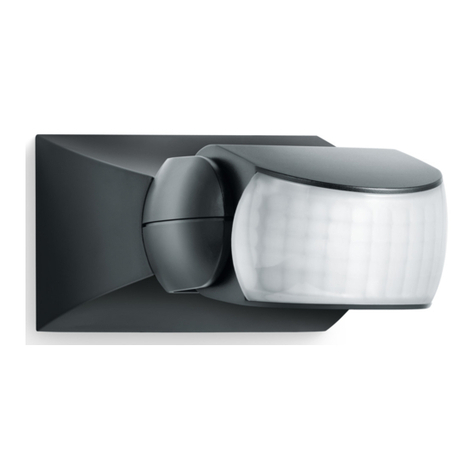
STEINEL
STEINEL IS 1 quick start guide
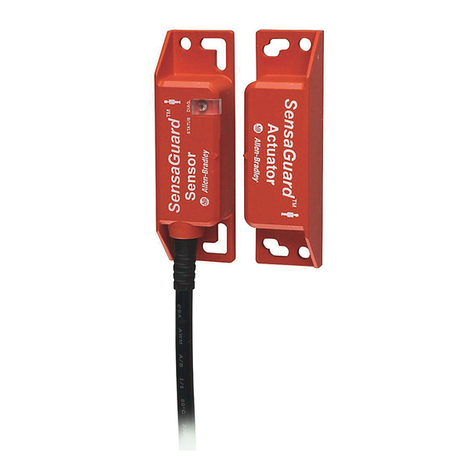
Allen-Bradley
Allen-Bradley SensaGuard 440N-Z21SS2H-AS installation instructions

DEFA
DEFA LedgeCircle RF manual
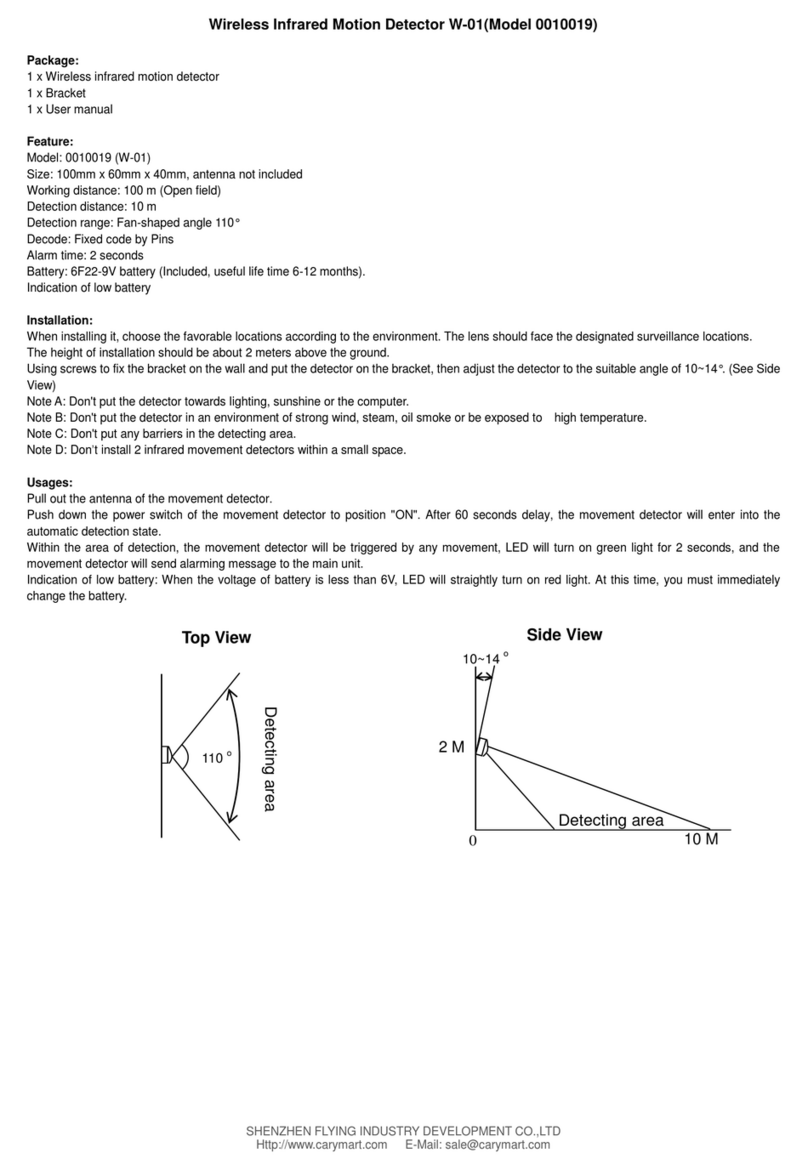
SHENZHEN FLYING INDUSTRY DEVELOPMENT
SHENZHEN FLYING INDUSTRY DEVELOPMENT W-01 quick start guide
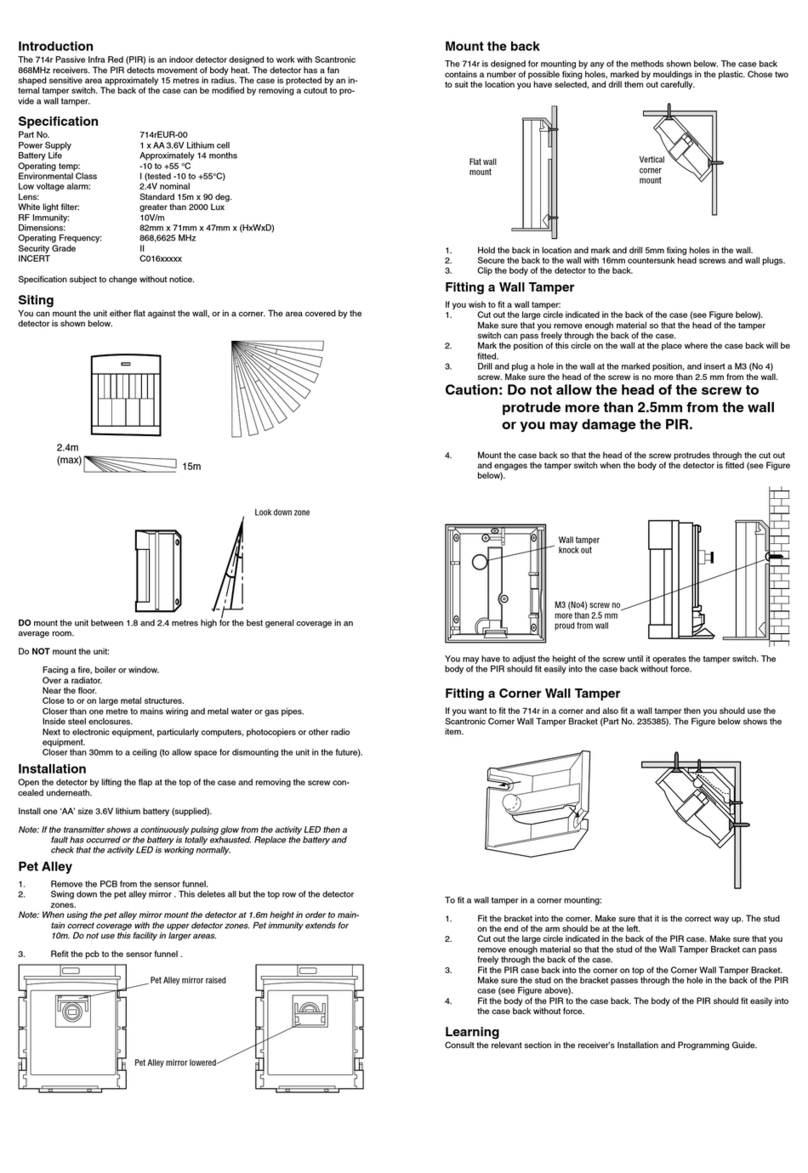
Cooper Menvier
Cooper Menvier Scantronic 714r manual
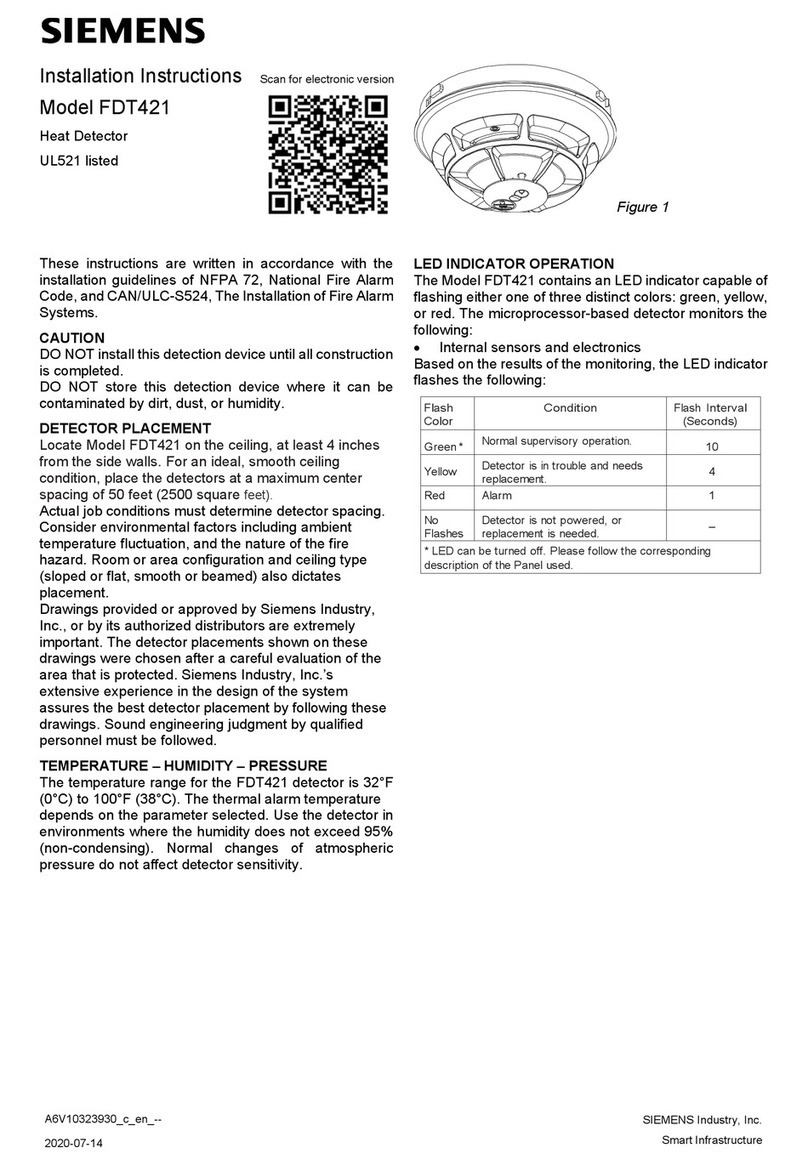
Siemens
Siemens FDT421 installation instructions
